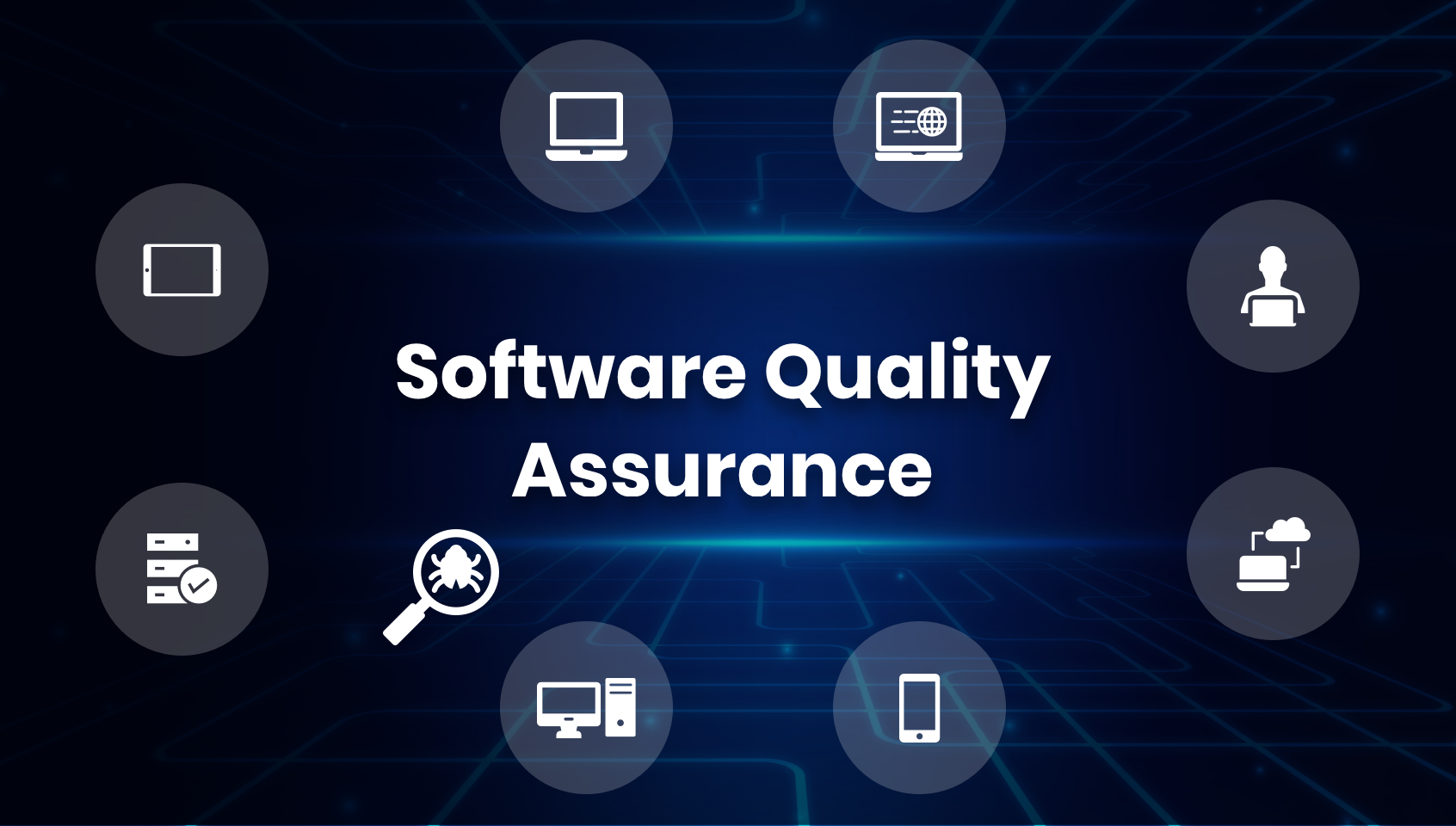Software Quality Assurance best practices align processes with standards, such as ISO 9000 and CMMI in software development. It spans the development lifecycle, emphasizing quality. Explore SQA’s benefits, challenges, elements, and techniques. Partner with TECHVIFY for proactive, industry-standard-driven quality, ensuring reliable software in today’s dynamic industry.
I. Software Quality Assurance Definition
It is a method that ensures that all processes, techniques, tasks, and components within software engineering are supervised and aligned with established standards. These standards could be ISO 9000, the CMMI model, ISO15504, or any combination.
SQA includes every step of the software development lifecycle, from requirement definition to coding to release. Ensuring quality is its primary objective.
- Software Quality Assurance
II. Advantages and Disadvantages of Software Quality Assurance
Leverage Advantages of SAQ
- Time and Money Savings: One of the primary benefits of SQA is its cost-effective approach, saving both time and resources by identifying and addressing issues early in the development cycle.
- Improved Customer Experience: SQA ensures that the final software product aligns with established standards, exceeding client expectations and fostering a positive client experience.
- Breakdowns Prevention: Another critical advantage is its ability to prevent breakdowns in the software development process. SQA’s comprehensive monitoring and regulation of software engineering aspects avoid disruptions in the development process, promoting a consistent and efficient workflow.
- Productivity and Efficiency: This method establishes best practices and quality standards, enhancing productivity and efficiency throughout the organization by optimizing workflows.
- Increased Safety: By managing and mitigating risks associated with software development, SQA enhances safety and reliability in the development process, providing a sense of security for both developers and end-users.
Manage Disadvantages of SQA
- Resource-Intensive Implementation: Implementing SQA processes demands a substantial allocation of time, personnel, and financial resources, which can be resource-intensive.
- Initial Costs: Initial costs are associated with establishing SQA processes regarding financial investment and the time required to set up and fine-tune the procedures.
- Potential Project Delays: SQA activities may sometimes lead to project delays if not effectively managed, which can be a disadvantage in projects with strict timelines.
III. Elements of Software Quality Assurance in Software Engineering
Let’s explore the ten critical components of SQA, essential for ensuring top-notch software quality.
| SQA Components | Practices |
| Software Standards Adherence | SQA teams are essential in ensuring the defined software engineering standards are always adhered to. |
| Technical Reviews and Audits | Active and passive inspections are conducted at every stage of the Software Development Life Cycle (SDLC) to ensure everything is on track. |
| Software Testing for Quality Control | SQA uses extensive software testing to identify and address potential faults or problems. |
| Error tracking and analysis | SQA closely monitors reported faults, handling and examining them to pinpoint frequent issues and failure patterns. |
| Metrics and Measurement | SQA collects data on the quality of processes and products through various checks and measurements to assess how sound things are progressing. |
| Change Management | SQA aims to prevent unpleasant shocks during software development by encouraging well-controlled change. |
| Partner Collaboration | SQA’s playbook includes strong collaboration with tool providers and outside contractors to guarantee the success of software projects. |
| Safety and Security Focus | SQA actively searches for vulnerabilities and proactively addresses security concerns rather than waiting for problems to arise. |
| Risk Management | Identifying risks, analyzing them thoroughly, and then taking steps to reduce them is a core function of SQA, helping make informed decisions. |
| Continuous Learning | SQA specialists must keep up with the newest technologies, industry norms, and trends. |
More Software Development Insight articles:
IV. SAQ Techniques
1. Auditing
Auditing examines software and its development process to identify and report on any areas of concern. Audits can be conducted at any stage of the software development lifecycle.
2. Reviews
Reviews examine software and its documentation to identify and fix any potential problems. Studies on requirements, design, code, and test plans can be conducted.
3. Code inspection
Code inspection is a formal process of reviewing code to identify and fix defects. A team of reviewers typically conducts code inspections, and they can effectively find defects that would otherwise be missed.
- SAQ Techniques
4. Design inspection
Design inspection is a formal process of reviewing software design to identify and fix potential problems. A team of reviewers typically conducts design inspections, and they can effectively find defects in the early stages of the software development lifecycle.
5. Simulation
Simulation is a software testing technique by creating a model of the software’s environment. This solution can test the software under different conditions and identify potential problems.
6. Functional testing
Functional testing is a type of testing that focuses on the functionality of the software. Available testers test the software to ensure it meets its requirements and works as expected.
7. Standardization
Standardization is defining and enforcing standards for software development and testing. This method can improve the quality of software by ensuring that it is developed and tested in a consistent and repeatable manner.
8. Static analysis
Static analysis is a technique of analyzing software code without executing it, which aims to identify potential defects in the code, such as security vulnerabilities and performance problems.
9. Walkthroughs
Walkthroughs are a type of software review in which developers guide the team through the software, discussing, asking questions, and suggesting improvements. They are an effective way to identify potential problems early in the software development lifecycle.
10. Unit Testing
Unit testing is a type of testing that focuses on the most minor testable units of software, such as functions, classes, and modules. Developers typically write and execute unit tests before code is checked into the codebase. Unit testing helps ensure that the individual units of software work as expected and are well-designed and easy to maintain.
11. Stress Testing
Stress testing tests software under heavy loads to see how well it can handle many users or requests. Stress testing is typically used to test the performance and scalability of software applications.
V. Drive Software Quality Assurance and Testing with TECHVIFY
Your journey to SQA transformation starts with TECHVIFY – your committed software quality assurance consultant in completely transforming your attitude to quality; we are more than just a testing service.
By establishing strict guidelines, following best practices, and using cutting-edge methods, our proactive SQA solutions aim to prevent problems before they arise. We go above and beyond by putting your software through rigorous stress testing and mimicking real-world situations to find flaws and provide a complete picture of its robustness. Uncertainty is eliminated by following industry standards and transparent regulations, greatly enhancing overall quality. TECHVIFY brings teams and stakeholders together to work together toward producing high-quality software products.
TECHVIFY is your reliable partner for software transformation. We can improve quality, guarantee dependability, and adopt a proactive strategy. To begin your project right now, contact us!
Conclusion
To sum up, we can now answer “What is software quality assurance?” and know its pros & cons. It has several benefits, such as higher productivity, better customer experiences, reduced costs, and improved safety. Nevertheless, there are drawbacks, such as resource-intensive implementation and possible project delays. These ten fundamental elements of SQA guarantee that quality standards are followed, and different methods like auditing, reviews, and stress testing find and fix problems.
TECHVIFY‘s proactive integration as a partner highlights the significance of cutting-edge technology and industry standards in attaining exceptional software quality.
TECHVIFY – Global AI & Software Solution Company
From Startups to Industry Leaders: TECHVIFY prioritizes results, not just deliverables. Accelerate your time to market and see ROI early with high-performing teams, AI (including GenAI) Software Solutions, and ODC (Offshore Development Center) services.
- Email: [email protected]
- Phone: (+84)24.77762.666






